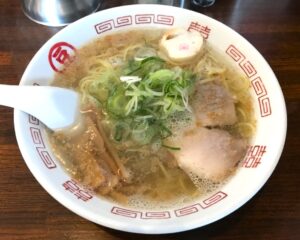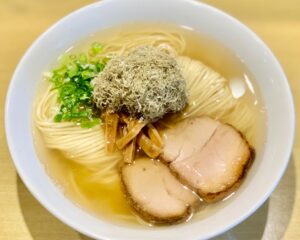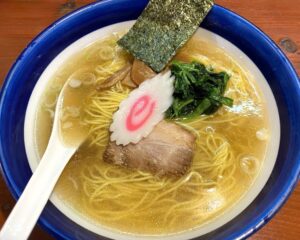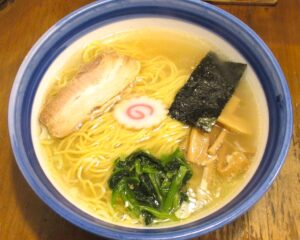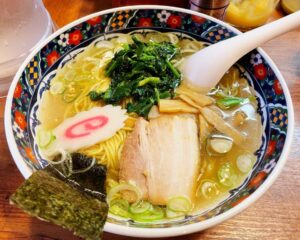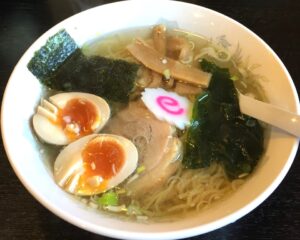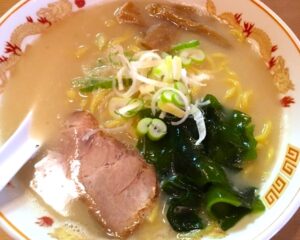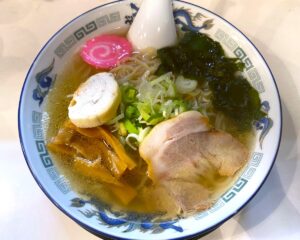Hakodate Ramen (Hokkaido Pref.)
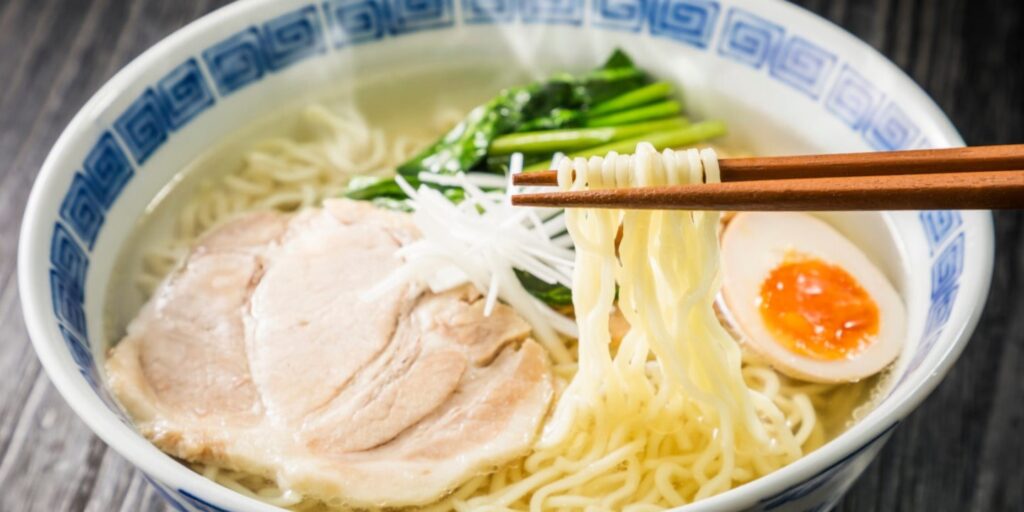
What is Hakodate Ramen(函館ラーメン)?
“Salt Ramen(塩ラーメン shio ramen)” is eaten mainly in Hakodate City, Hokkaido, and uses soup made from seafood caught in nearby waters, with a base of pork bones and chicken bones. The noodles are medium-thin straight noodles, and are characterized by a soft and chewy texture. Most of the toppings are traditional, such as chashu pork, menma, green onions, spinach, and naruto.
Elegant salt ramen
For some reason, Hakodate is known for its “salt ramen.” It’s as if the media made it up to match “Sapporo miso” and “Asahikawa soy sauce,” but when you actually go there, it’s unmistakably “salt ramen.” When you walk into a shop and order “ramen,” you are sure to get salt ramen.
Clear and gentle soups are the norm. While Asahikawa and Sapporo make you feel like a man, Hakodate makes you feel like a woman with dignity.
Noodles have a slightly high water content and are curly to the point of waves. The ingredients are simple to take advantage of the clear soup made from pork bones without making it cloudy.
Ramen in Hakodate got its start early, perhaps due to active exchange with foreign cultures. There are also old records that say it may be the first in Japan. Chinese cuisine seems to have been around since at least the 1877, so it’s no surprise that ramen appeared early on. Records from the early Showa(1926-1945) era mention the existence of ramen and Chinese soba. There is a theory that its roots can be found in Cantonese-style Chinese soba restaurants run by overseas Chinese from Jiangnan around 1877, and its original form was “Chinese soup noodle(中国汁そば),” which was characterized by straight noodles and clear soup. be done.
Popular spots include “Houraiken(鳳来軒)”, “Horan(鳳蘭)”, “Ajisai(あじさい)”, and “Matsuraku(松らく)”. All of them are ramen with clear soup and simple ingredients. “Ajisai(あじさい)” is located on the second floor of a building in front of Goryokaku, and it doesn’t look like a ramen shop. To begin with, there are very few specialty ramen shops in Hakodate, and most of them are from Chinese restaurants. The menu is extensive, and in many cases, ramen also includes soy sauce and miso. However, as mentioned above, if you ask for “ramen” here, you will still get salt ramen.
Mame-san(マメさん), which was revived at the Shin-Yokohama Ramen Museum in 2000, made a triumphant return to the local area in 2001 and has become popular. It was originally located in Hakodate and was popular in the Showa40s(1965~), but it closed due to various reasons. The Shin-Yokohama Ramen Museum and the president of Okada Seimen, a local noodle factory, collaborated to revive the shop with a modern twist. (Closed in August 2023)
In Tokyo, where almost any type of ramen exists, Hakodate ramen doesn’t have that much popularity despite its history.
Ramen-Japan / Examples of Ramen Shops
Examples of long-established Hakodate ramen shops
-

-
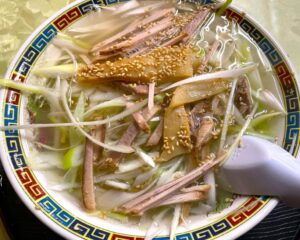
Saien (西園/1935) *The mild and tasty green onion ramen (salt) is popular.
-
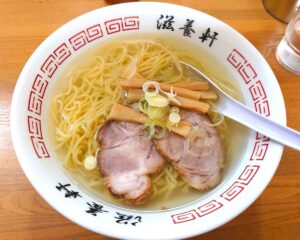
Jiyoken (滋養軒/1947) *The traditional Hakodate salt ramen that preserves tradition.
-
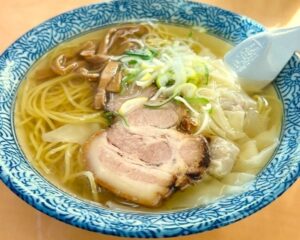
-
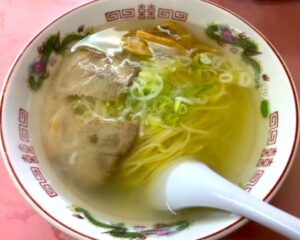
-
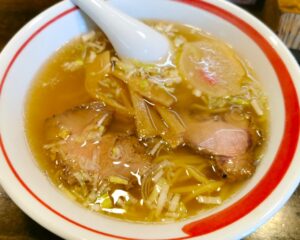
Examples of other popular Hakodate Ramen shops
-
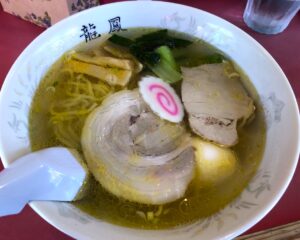
Shin Hakodate Ramen Ryuho(新函館らーめん 龍鳳) * Golden salt ramen made with aged chicken oil.
-
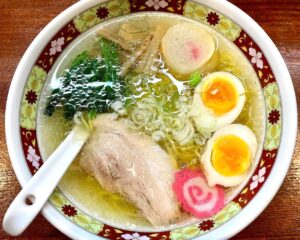
Hakodate Shio Ramen Shinano(はこだて塩らーめん しなの) * Ginger salt ramen is also popular.
-
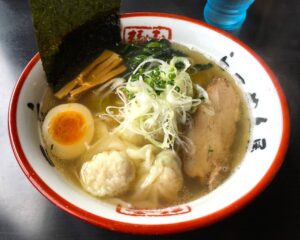
-
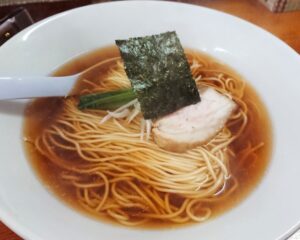
Chuka Soba Manmarutei(中華そば まんまるてい) ※Sliced kelp is served as a side dish. Light.
-
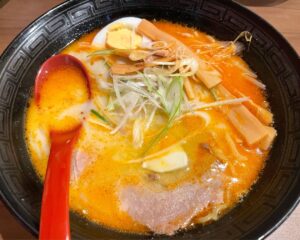
-

Hakodate Menya Yondaime(函館麺屋 四代目) ※The Aburi Shio Ramen is a salt ramen topped with seared pork.
-

Men Tsuru-tsuru-tei(麺つるつる亭) ※The base soup stock changes daily.
-
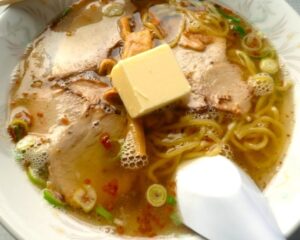
-
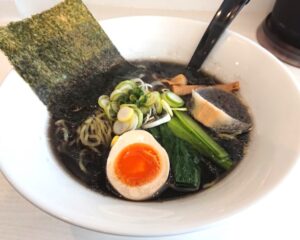
Ramen Maido(らーめん まいど) ※They have a black salt ramen called Kuroshio Ramen.
Examples of shops serving Hakodate ramen in the metropolitan area
Examples of Hakodate ramen that can be purchased at supermarkets and online stores
* You can purchase it at supermarkets, drugstores, and official online stores throughout Japan (delivery within Japan only).

